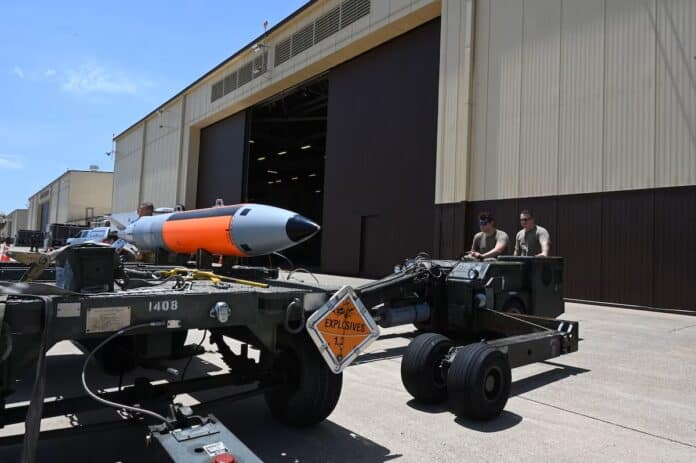The United States Department of Defense (DoD) announced that the Department of Energy’s National Nuclear Security Administration (NNSA) will build a modern variant of the B61 nuclear gravity bomb called the B61-13. It is awaiting Congressional approval and funding.
The decision to pursue this capability, which was undertaken in close collaboration with the NNSA, responds to the demands of a rapidly evolving security environment as described in the 2022 Nuclear Posture Review.
The United States has one of the largest nuclear weapon inventories in the world, with the Department of Defense maintaining an estimated stockpile of approximately 3,708 warheads. This number is much lower than during the Cold War, and only a few hundred of these warheads are deployed at any time, but they still provide a strong nuclear deterrent for the West along with France and Britain.
However, the US nuclear weapons are aging and deteriorating, with many of them being over four decades old. They are made of radioactive materials and other substances that degrade over time, which means they have a limited shelf life before they become unreliable. Also, the nature of modern military challenges has changed, requiring new designs and capabilities.
The US military plans to introduce a new nuclear gravity bomb as part of its modernization efforts. The B61-13 would be deliverable by modern aircraft, strengthening deterrence of adversaries and assurance of allies and partners by providing the President with additional options against certain harder and large-area military targets.
The B61-13 bomb would replace some of the B61-7s in the current nuclear stockpile and have a yield similar to the B61-7, which is higher than that of the B61-12. The goal is to provide the US military with a new nuclear gravity bomb with improved capabilities and reliability without increasing the size of the overall inventory.
“The B61-13 represents a reasonable step to manage the challenges of a highly dynamic security environment,” said Assistant Secretary of Defense for Space Policy John Plumb. “While it provides us with additional flexibility, production of the B61-13 will not increase the overall number of weapons in our nuclear stockpile.”
The B61-13 would utilize the existing production capabilities that support the B61-12 and feature modern safety, security, and accuracy enhancements of the B61-12.
This initiative follows several months of review and consideration. The fielding of the B61-13 is not in response to any specific current event; it reflects an ongoing assessment of a changing security environment.
“Today’s announcement is reflective of a changing security environment and growing threats from potential adversaries,” said Plumb in an official statement. “The United States has a responsibility to continue to assess and field the capabilities we need to credibly deter and, if necessary, respond to strategic attacks and assure our allies.”
